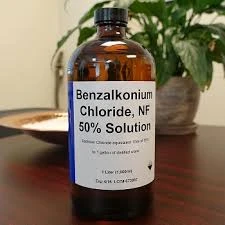coagulants and flocculants
Coagulants and Flocculants Understanding Their Role in Water Treatment
In the realm of water treatment, coagulants and flocculants play a crucial role in ensuring the quality and safety of drinking water as well as the effective treatment of wastewater. These chemical agents are employed in numerous industries to facilitate the removal of suspended solids, turbidity, and other contaminants, making them vital in environmental management and public health.
Coagulants
Coagulants are substances that promote the clumping together of particles in water, leading to the formation of larger aggregates known as flocs. This process is known as coagulation, and it typically involves the neutralization of the electric charges that keep particles dispersed in water. Commonly used coagulants include aluminum sulfate (alum), ferric chloride, and polyaluminum chloride, each of which has its specific applications based on water chemistry and treatment goals.
The coagulation process begins with the addition of the coagulant to the water. Once introduced, the coagulant dissolves and releases positive ions that neutralize the negative charges of the suspended particles. Upon this neutralization, particles that previously repelled each other begin to aggregate, forming larger particles that are easier to remove during subsequent treatment stages.
Flocculants
While coagulants initiate the aggregation of particles, flocculants enhance this process by promoting the growth of larger flocs and aiding their removal from the water. Flocculants are typically high-molecular-weight polymers that work by bridging individual particles together, resulting in larger and heavier flocs that settle more easily.
Unlike coagulants, flocculants can be synthetic or natural and are categorized based on their charge (anionic, cationic, or non-ionic). The selection of a specific flocculant depends on the characteristics of the water being treated, including the type of impurities present and the desired clarity of the final effluent.
coagulants and flocculants

The Treatment Process
The treatment process often begins with rapid mixing to ensure that the coagulant is evenly distributed throughout the water. Following this, gentle mixing allows the newly formed flocs to grow larger. This phase may last for minutes to hours, depending on the specific conditions and requirements of the treatment facility. Finally, the water is subjected to sedimentation, where gravity causes the larger flocs to settle at the bottom, thereby clarifying the water.
Filtration may follow sedimentation to remove any remaining suspended solids and flocs, ensuring the treated water meets safety standards. In some cases, additional treatments such as disinfection may be necessary to eliminate pathogens and ensure microbiological safety.
Applications and Benefits
The use of coagulants and flocculants extends beyond drinking water treatment. They are critical in wastewater treatment, industrial processes, and even in mining operations where water reclamation is necessary. Additionally, these agents are essential in reducing the environmental impact of effluents by facilitating the removal of pollutants.
The benefits of using coagulants and flocculants include improved water quality, reduced chemical usage in subsequent treatment steps, and lower operational costs associated with pump and energy use in water treatment plants. Moreover, effective coagulation and flocculation can lead to substantial reductions in the formation of disinfection by-products, contributing to safer drinking water.
Conclusion
In summary, coagulants and flocculants are indispensable in the treatment of water, playing a vital role in ensuring that it is clean and safe for consumption and use. By understanding their mechanisms and applications, water treatment facilities can optimize their processes, improve water quality, and protect public health, thereby fostering a sustainable approach toward water management.
-
lk-319-special-scale-and-corrosion-inhibitor-for-steel-plants-advanced-solutions-for-industrial-water-systemsNewsAug.22,2025
-
flocculant-water-treatment-essential-chemical-solutions-for-purification-processesNewsAug.22,2025
-
isothiazolinones-versatile-microbial-control-agents-for-industrial-and-consumer-applicationsNewsAug.22,2025
-
scale-inhibitor-key-solutions-for-water-system-scale-preventionNewsAug.22,2025
-
organophosphonates-versatile-scale-inhibitors-for-industrial-water-systemsNewsAug.22,2025
-
scale-and-corrosion-inhibitor-essential-chemical-solutions-for-water-system-maintenanceNewsAug.22,2025





